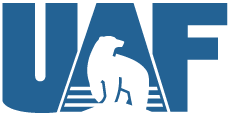51Ěš┴¸╣┘═° critical minerals proposal a finalist for major NSF funding
Rod Boyce
907-474-7185
Sept. 24, 2025
A 51Ěš┴¸╣┘═° proposal to reduce the United StatesÔÇÖ dependency on foreign sources of minerals critical to the technology and defense industries has been named one of 15 finalists in a National Science Foundation competition.
51Ěš┴¸╣┘═°ÔÇÖs proposal would establish the Alaska Critical Mineral Accelerator at the 51Ěš┴¸╣┘═° Geophysical Institute and could bring over 10 years of funding through the NSFÔÇÖs program.

Lee Ann Munk of the 51Ěš┴¸╣┘═° Geophysical Institute at a National Science Foundation event in Washington, D.C., on Sept. 18, 2025.
The NSF announced the finalists Thursday in Washington, D.C., in conjunction with a display by representatives of the finalists to members of Congress and congressional aides.
ÔÇťAlaska is experienced and is ready to lead and deliver,ÔÇŁ said Lee Ann Munk, director of the Geophysical InstituteÔÇÖs and lead investigator on the proposal. ÔÇťAlaska is strategically essential to American critical mineral independence.ÔÇŁ
The Alaska Critical Mineral Accelerator aims to bring resources to the state and university to make Alaska a leader in supporting an emerging U.S. critical minerals mining industry. Partners in the proposal include state and federal agencies, mining companies and organizations, other universities, tech start-ups, venture capitalists, non-profits and Alaska Native corporations.
Alaska contains 51 of 54 minerals on the U.S. Geological SurveyÔÇÖs , released in August. The United States was fully reliant on foreign sources for several of the minerals and relied on foreign sources for more than half of its needs for many others.
ÔÇťWe are confident we can meet the nationÔÇÖs needs as spelled out in recent White House executive orders,ÔÇŁ Munk said upon learning 51Ěš┴¸╣┘═°ÔÇÖs proposal is a finalist. ÔÇťOur partners in this project are eager to make it happen.ÔÇŁ
The NSF received 294 applications for the second round of its Regional Innovation Engines program. It accepted 71 of those and named 29 semifinalists in early July. Semifinalists underwent a live virtual assessment.
Finalists will next be subjected to a site visit by NSF staff.
"The NSF Engines finalists have consistently communicated their strong vision for placing their regions on the map as the national and world leaders in key technologies, demonstrating their commitment to advancing U.S. research, innovation and workforce development,ÔÇŁ said Brian Stone, performing the duties of the NSF director.
The Regional Innovation Engines program aims to accelerate technology development, address societal challenges and stimulate economic growth, particularly in regions that have not fully participated in technology booms.
The program provides up toÔÇ»10 years of fundingÔÇ»per proposal, with the option to get two years of funding for planning. The programÔÇÖs first awards were made in January 2024.
Additional funding for the program, including funding for the current proposals, is contingent on Congress and the White House providing enough money to the NSF to sustain the program.
ADDITIONAL CONTACT: Lee Ann Munk, lamunk@alaska.edu


